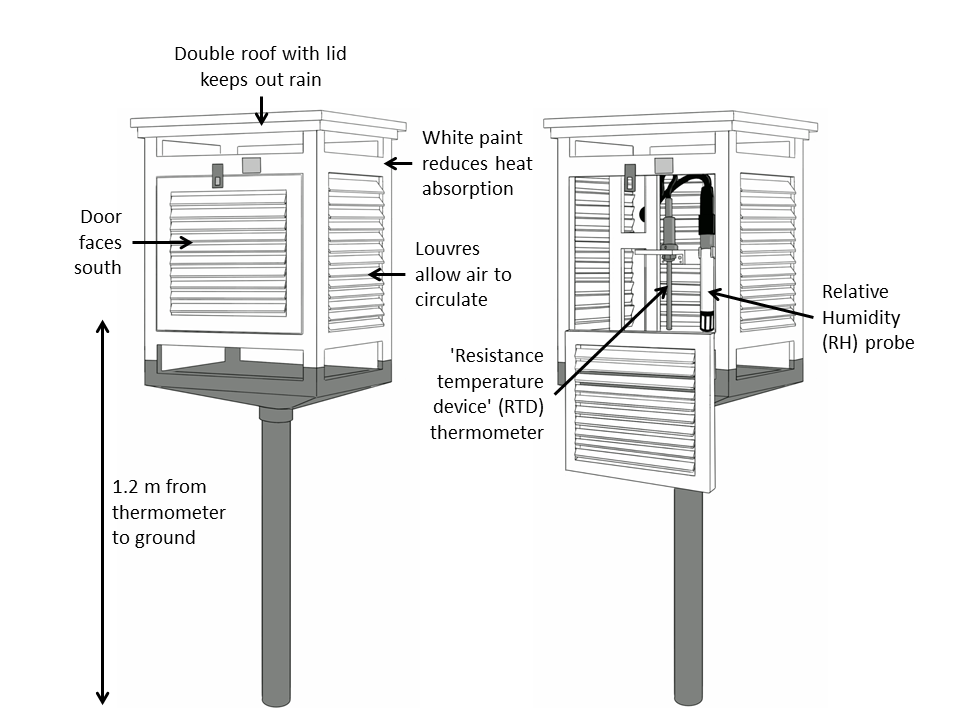Ask the Bureau: How is temperature measured?
12 April 2016
To take temperature measurements, thermometers are placed inside instrument enclosures known as a Stevenson screen.
A Stevenson screen is basically a box with louvres that allow air to circulate around the thermometer inside while protecting it from outside elements like rain and direct sunlight. The outside is painted white to minimise heat absorption. This basic design has been around for about 150 years, and is used by most meteorological organisations around the world.
Choosing the right position for a Stevenson screen is really important. Nearby objects like buildings and trees can reflect or absorb heat, so the Bureau always tries to place a Stevenson screen well away from any such features. We always set the screens up over a natural surface, like grass, and avoid surfaces like concrete.
The screen is raised so that the thermometer is 1.2 m above the surface, because there can be as much as a 7°C temperature difference between the temperature measured at the ground and 2 m above the ground. In the southern hemisphere we face the screen to the south, so that even when the door is open we avoid direct sunlight hitting the thermometer.

A Stevenson screen, closed (left) and open (right), containing a resistance temperature device (thermometer) and a relative humidity probe.
Traditionally, trained observers would read the thermometer and send in the observations at least twice a day—normally at 9 am and 3 pm; but these days we have automatic thermometers that send in the information electronically, so the Bureau can collect a lot more data.
The Bureau has been measuring air temperature for over 100 years now, and we have around 700 automatic weather stations set up all over the country, so Stevenson screens are important for getting consistent air temperature measurements—no matter where you are.


Comment. Tell us what you think of this article.
Share. Tell others.